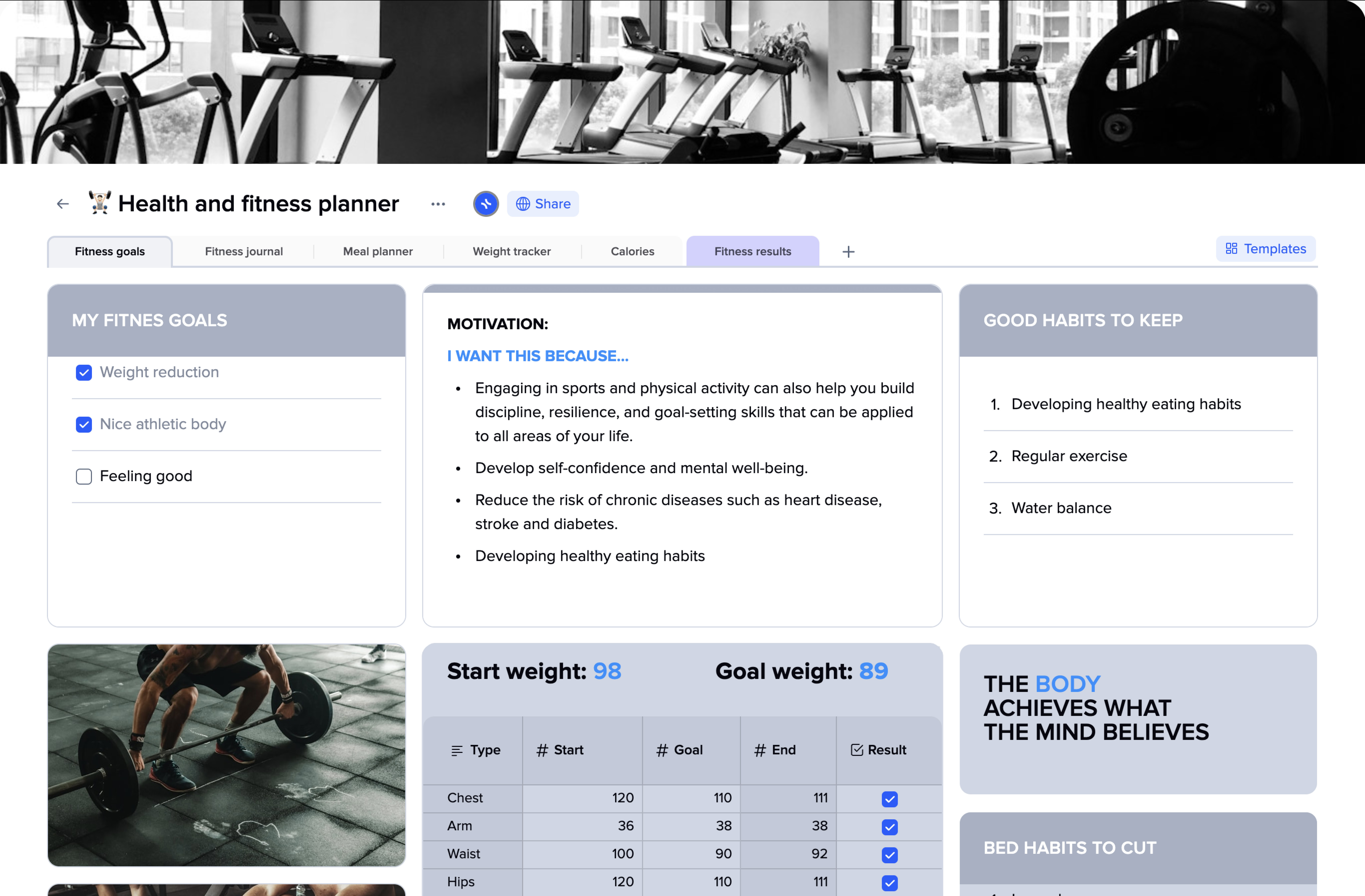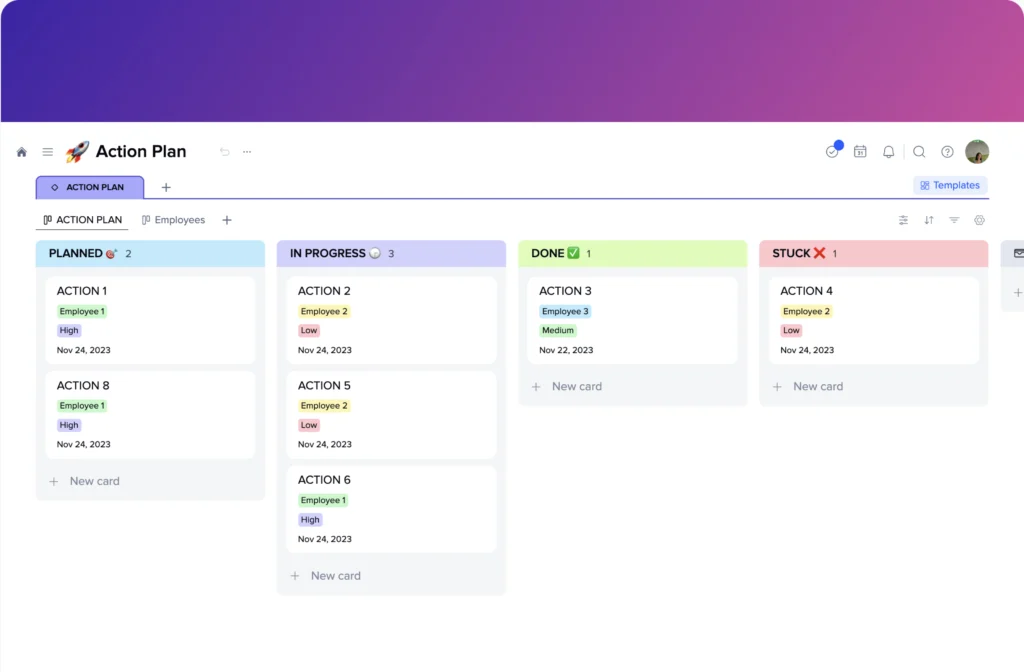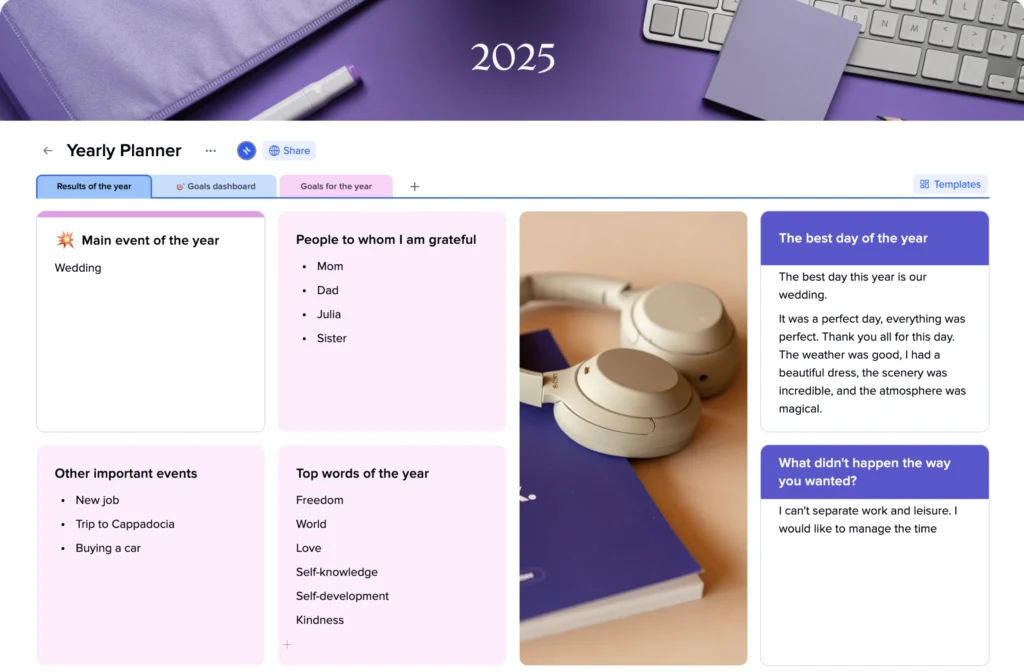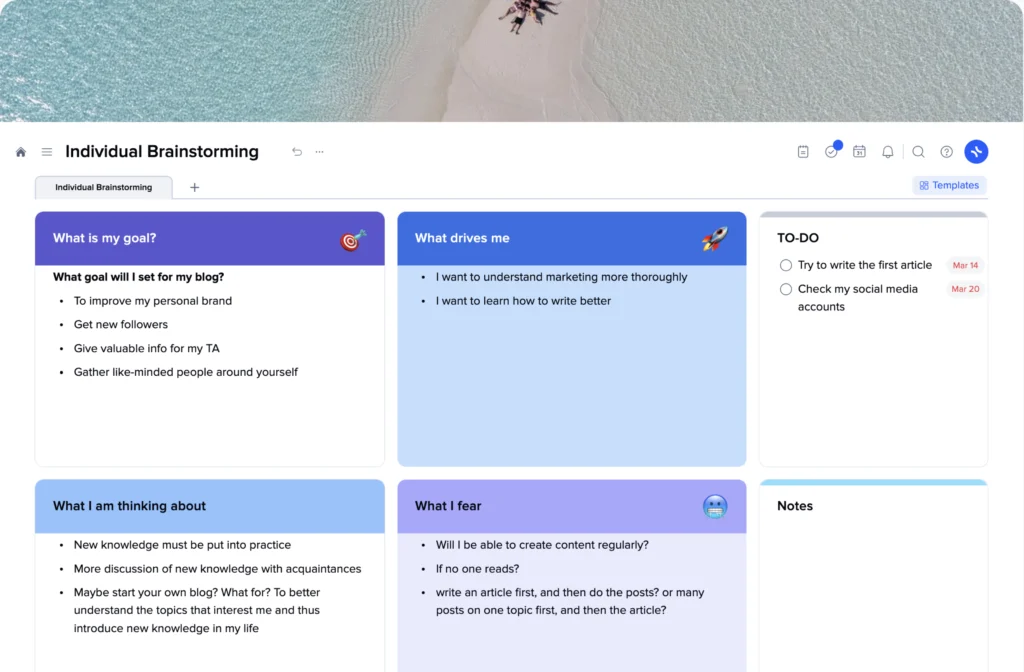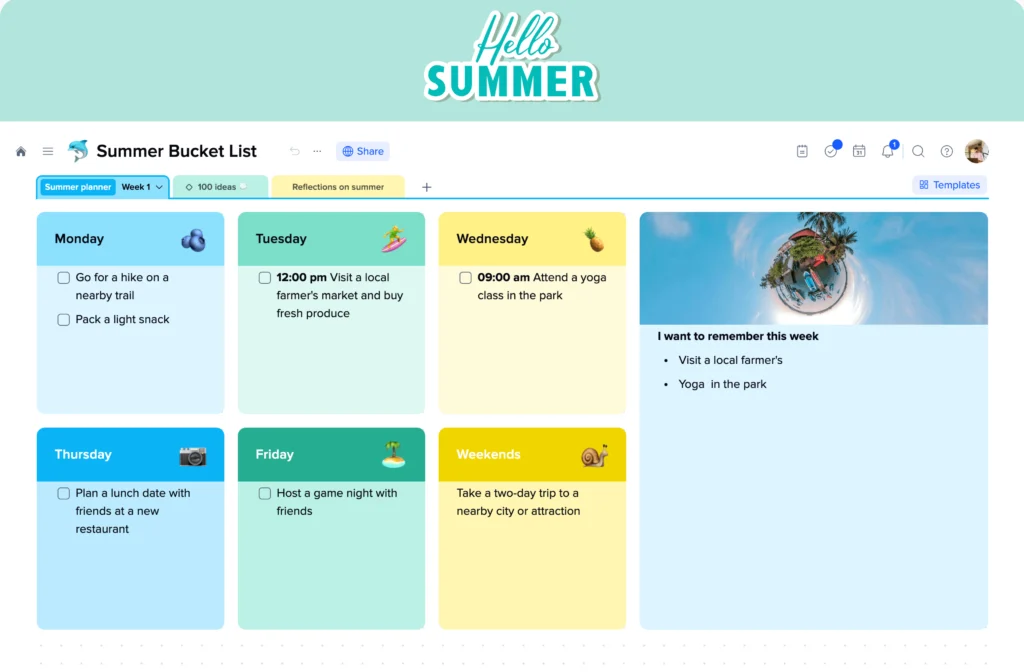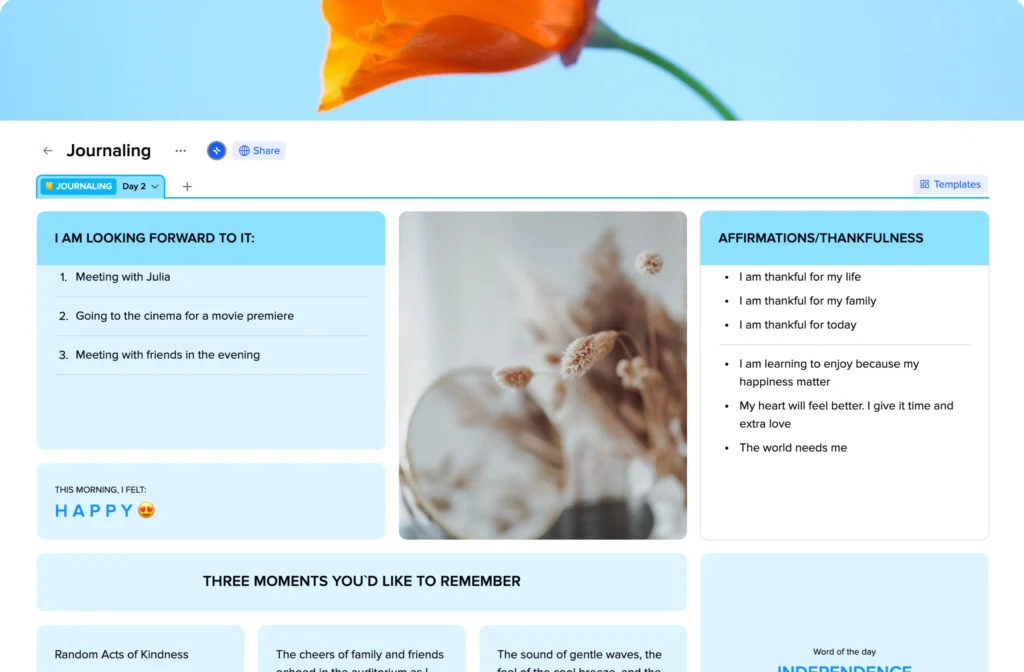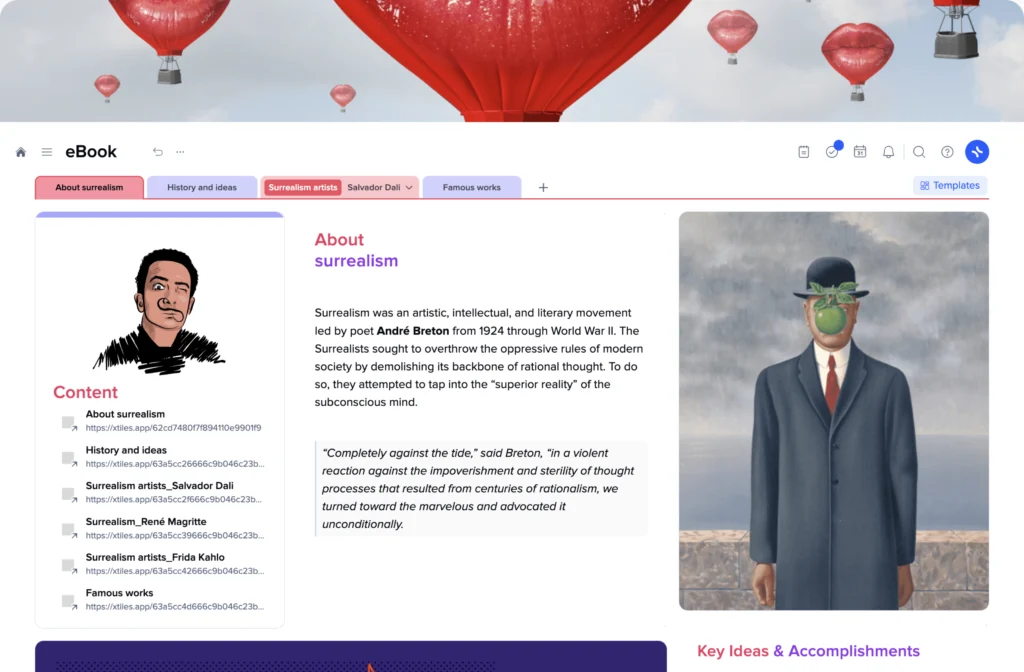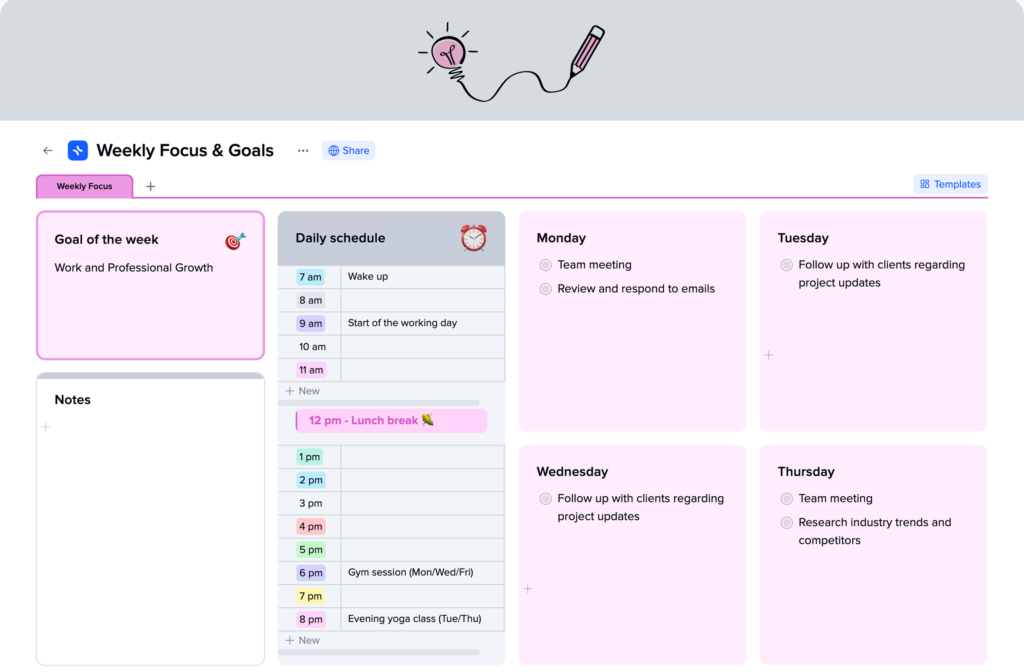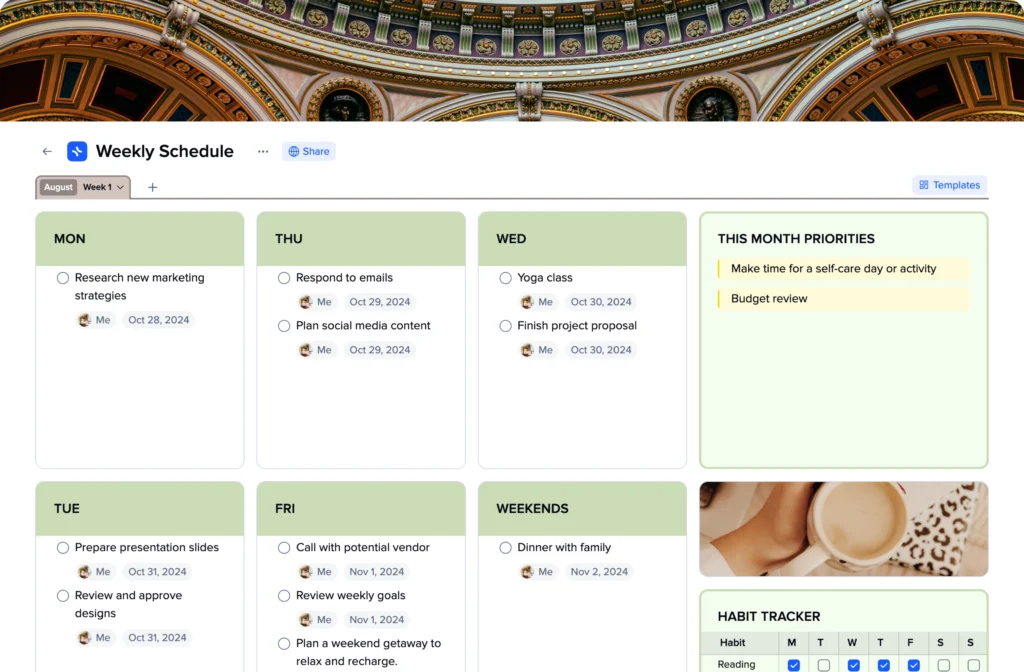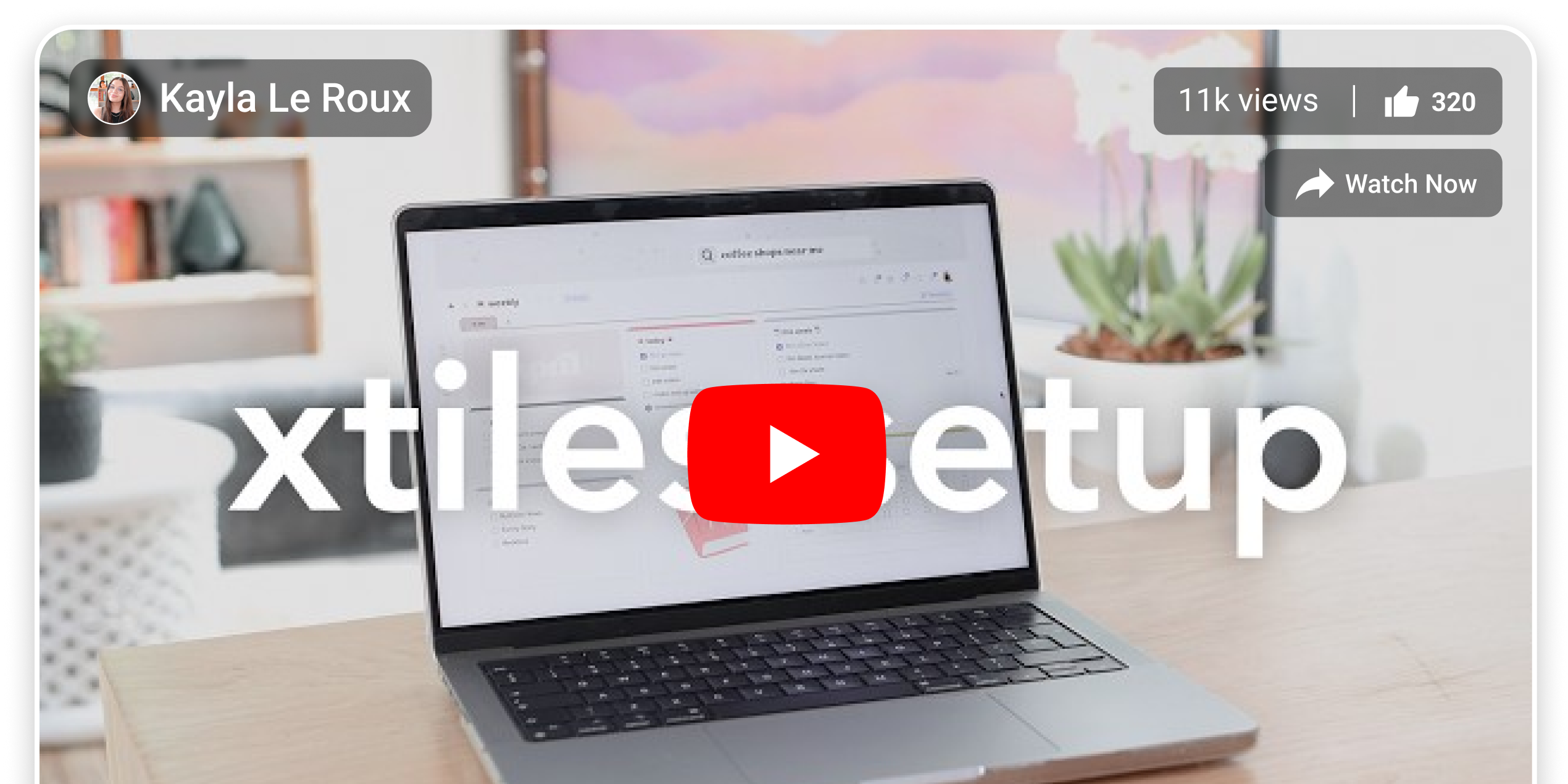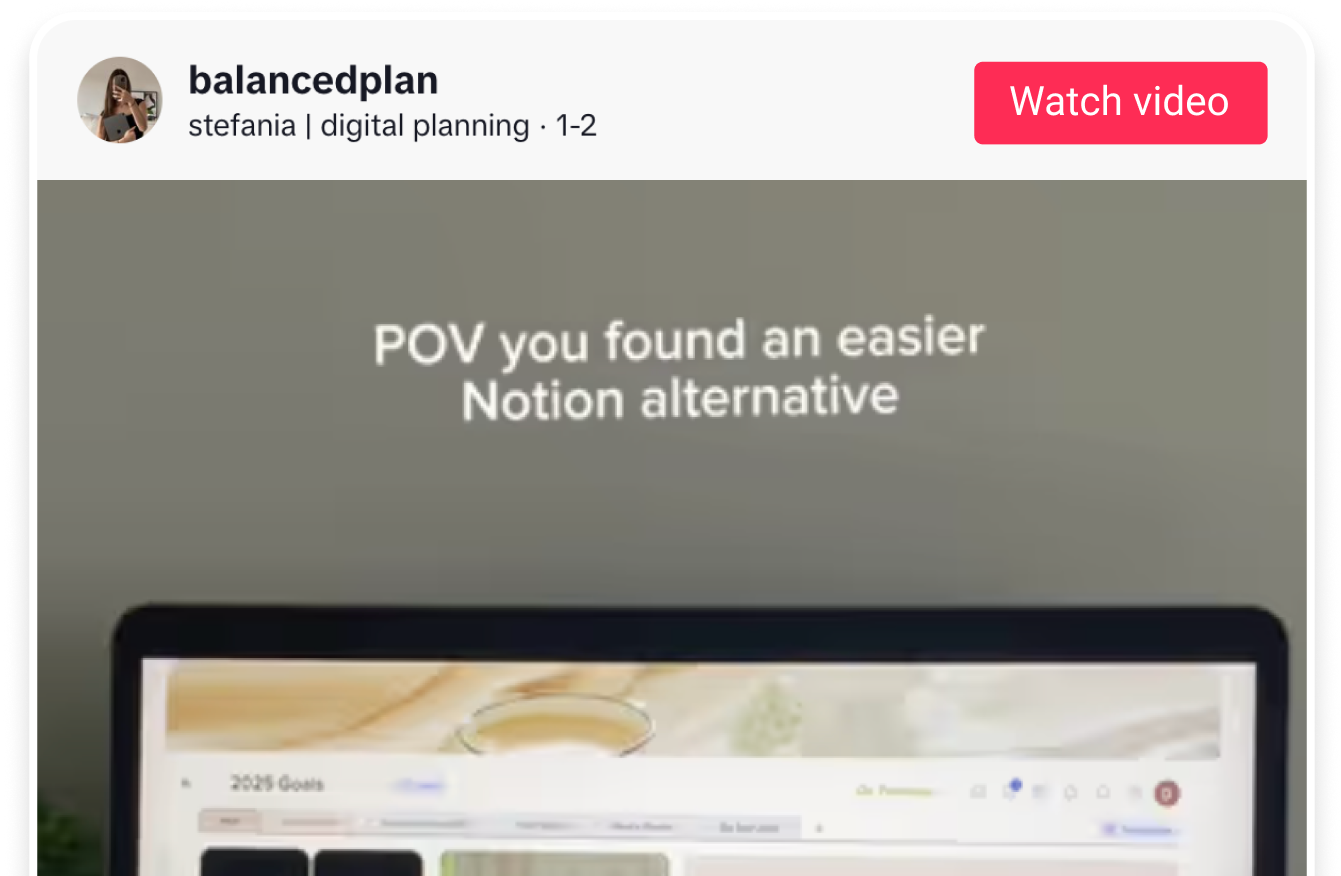Health and fitness planner Template
The most common reason people quit working out is losing motivation. That can happen when no progress is visible or when the training is too hard. That means there was a problem at the beginning they could prevent or resolve if they planned their fitness activity more thoroughly according to their shape and abilities. How is that possible?
A fitness plan guides people on their fitness journey, considering their unique needs and current physical shape. By allowing for customization, fitness plans help people ensure growth and development in a healthy, non-traumatic way.
A fitness planner template is a pre-designed framework to help you quickly yet fully track your fitness activity and progress, plan your training sessions and meals, and learn to understand yourself and your body better.
The xTiles Health and Fitness Planner Template helps keep control over every aspect of your fitness journey in relation to your health and well-being in one place. The template can be tailored to fit your specific needs 100% by allowing for easy customization.
What is a fitness plan?
A fitness plan is a personalized schedule of exercises designed to help individuals achieve their fitness goals. The key point about fitness plans is their flexibility and, as a consequence, uniqueness. In other words, how many people, so many fitness plans.
There are many factors to consider before creating a personal fitness planner, and it’s always easier and quicker to do it with a trainer. Trial and error methods will probably lead you to your goal as well. Yet, the road might be much longer because you will need to learn much about yourself, the human body, physical activities, meal planning, macro and micronutrients our bodies need, etc.
The essential factors to take into account are weekly availability and your body type. When a person clearly understands the time they can dedicate to exercise without impacting other spheres of their lives and acknowledging their body’s capabilities, they can create a plan that fits seamlessly into their lifestyle and maximizes their chances of reaching success.
The exercises in a fitness planner will vary depending on its owner’s desired outcome. Whether your goals revolve around improving cardiovascular health, building strength and muscle, increasing flexibility, or combining these aspects, your fitness plan can be tailored accordingly.
Your fitness program’s effectiveness depends on whether you consider your current fitness level, existing health conditions, and available resources for regular exercising or not. If you’re working on your weight loss fitness planner with your trainer, be honest about everything that might impact your results, like binge-eating habits, low physical activity during the day, chronic diseases, etc. If you work on your fitness planner on your own, be honest with yourself too. Don’t overestimate your abilities, especially if you’re a newcomer.
The truthful information helps in selecting exercises that are appropriate for your starting point and can be safely executed. They ensure you feel comfortable while exercising while giving 100%. The more demanding and challenging your fitness plan is, the higher are chances of quitting.
The exercises incorporated into a fitness plan can be of any kind. Don’t like jumping? There are plenty of effective exercises where you don’t have to jump. Like doing your exercises while lying on the floor? There still are plenty of these that will help you reach the desired goal.
You may choose from simple activities like walking or jogging to more complex and challenging routines like weightlifting or high-intensity interval training (HIIT).
A well-rounded fitness plan often includes a combination of exercise types to target different aspects of fitness, providing a balanced and comprehensive approach while keeping your training activities exciting for you.
The moment you start turning your head around to check on different objects in the room, your training session becomes boring, and it would be better to adjust your fitness planner a bit if you still want it to be effective. The xTiles Fitness Planner is easily adjustable, so you can edit it after every workout if you think there’s a need.
It’s important to remember that a fitness plan is not a one-size-fits-all solution. It should be tailored to your unique needs, preferences, and goals. Regular evaluation and adjustment of the plan are essential as you progress and your fitness levels improve. By following a well-designed fitness plan, you can stay motivated, track your progress, and work steadily towards achieving the desired results.

